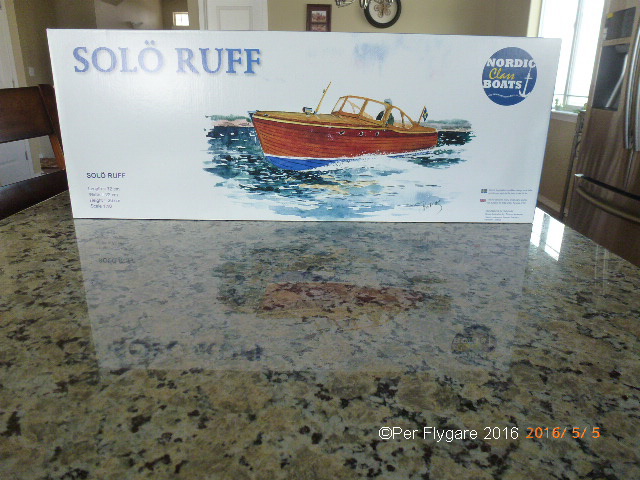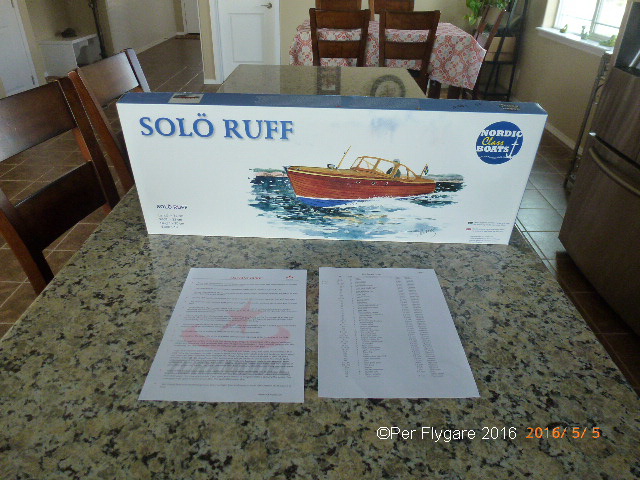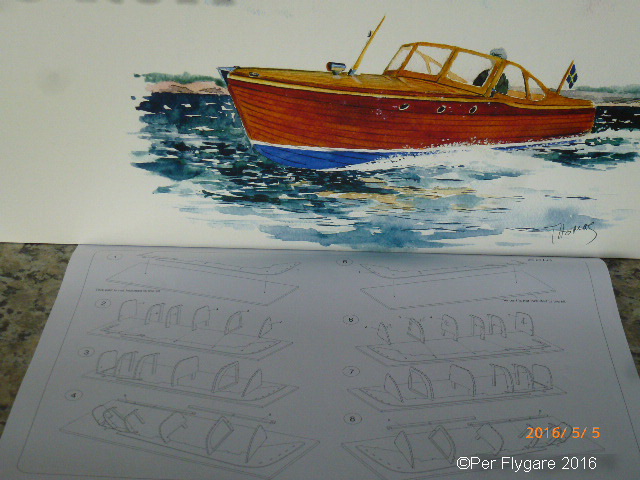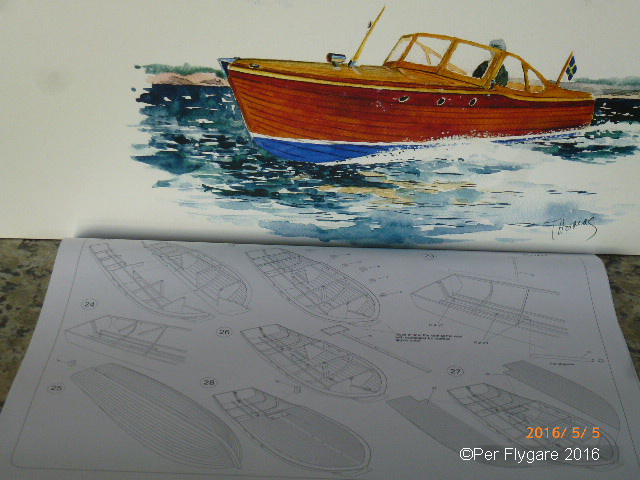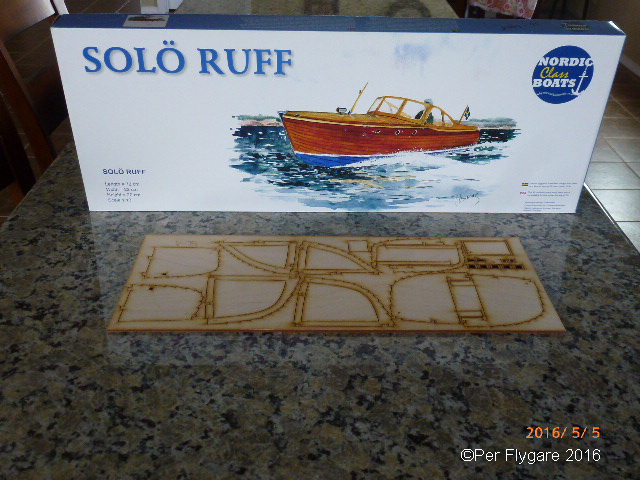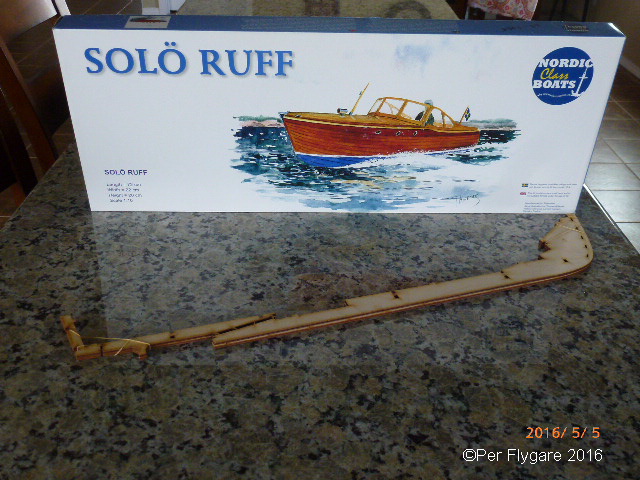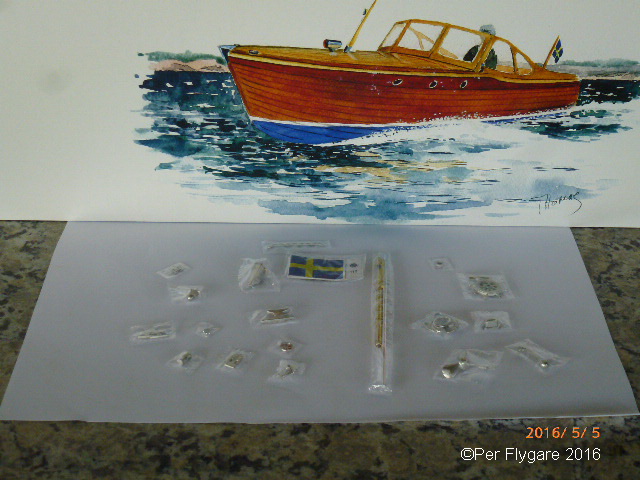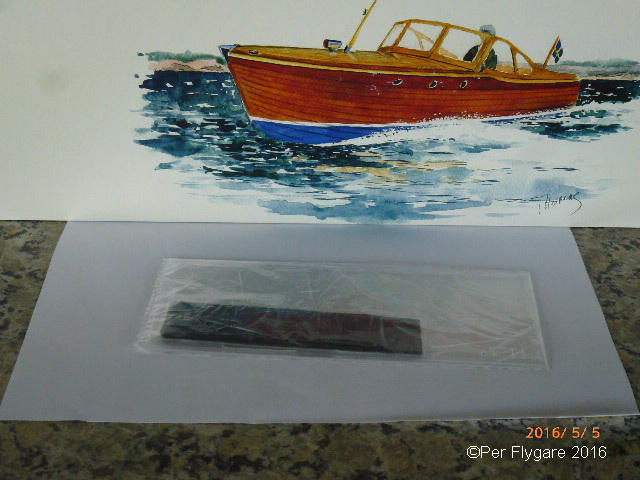-
Posts
5,441 -
Joined
-
Last visited
Content Type
Profiles
Forums
Gallery
Events
Everything posted by Nirvana
-
Solö Ruff This is my build log of Solö Ruff, first an introduction of the boat itself. This boat was built by Storebro from a design by Einar Runius (1897-1967), a famous Swedish boat designer. It´s a truly elegant, cabin-boat combining elegance with ruggedness, roominess and comfort with the maximum in cockpit and deck utility. In all the Solö series, a total of 2800 models were built beetween 1951 and 1964: Solö Ruff I (1951-53) •Length: 6,85 meters •Breadth: 2,00 meters •Displ: 1,1 ton •Engine: Penta BB41 Solö Ruff II (1953-57) •Length: 7,00/7,15 meter •Breadth: 2,10 meter •Displ: 1,25 ton •Engine: Penta BB50 Solö Ruff III (1957-1959) •Length: 7,35 meter •Breadth: 2,44 meter •Displ: 1,30 ton •Engine: 1 or 2x Penta BB70 Solö Ruff IV (1959-64) •Length: 7,25 meter •Breadth: 2,20 meter •Displ: 1,25 ton Solö does not have any brass detailing but instead high polished steel. This is something I will try to highlight. She was built clinker style, either oak or mahogany. Mostly mahogany. This model is based on the 1960 boat which became the most popular one. Solö was intended for the international market and likewise it had a huge success. Still today many of the boats can be found at various Vintage Boat Shows. The most common engine was now Volvo Penta BB115. A very reliable and strong engine. Still Solo was capable of speeds up to 24 knots, but cruised best around 15 knots I hope you will enjoy this adventure with me. So let’s start with intro of the model kit. It’s a Nordic Class Boats by atlastmodels.se, manufactured by TurkModel. Historic reference is Lennart Ivarsson, Storebro Trading Credit should also go to Thomas Ahlander for the cover illustration. Upon opening the box I was greeted by a color paint schematic. This to help with painting the boat. The build process is not provided by any means in words as we normally have an instruction booklet of some kind. There is one sheet covering the parts and one sheet with a little recommendations, no instructions. The building process is very much like Billing Boats with sketches instead. But everything is easy to understand and straight forward. The hull is built in two halves to be glued together. Totally there is 8 sheets A3 format as for instructions. Solo can be built either as a static model or as a RC. She will be built as a static. All pieces except for the planking is laser cut to high quality. Edit: planking is laser cut as well due to profile and port/starboard separation. Some of the parts almost falls out by gravity. I am extremely happy and surprised by the keel piece. Even though the box itself is on the edge of being too small. The keel is straight as an arrow. So there is nothing to worry about in that matter. The kit is a plank on frame. I haven’t decided yet how to approach the engine as it would be great to have a 1:10 scale engine inside of her. How and where I would find such I don’t know. I will probably leave it out or make a coarse dummy. All the metal pieces are made out of Britannia metal. There is a flag that is accurate color wise. Included in the kit there is actually soft material for cushions. Now before starting anything: Here is some stats about the kit. Length: 72 cm, 2’ 4 11/32 “ Width: 22 cm, 8 21/32 “ Height: 20 cm, 7 7/8 “ Weight finished: ? Kg and ? Lbs The first thing is now to get a build foundation for the two halves. For that I am using shelf parts from the old office. It will work for now. I will also start working on varnish test as I like to get as close to the dark mahogany finish as possible for the hull. The deck will have a light finish. For the varnish I will start with Min-Wax products. Any questions and input is as usual very welcome.
-

Papegojan 1627 by mati - FINISHED - 1/48
Nirvana replied to mati's topic in - Build logs for subjects built 1501 - 1750
Now that is a new way! And I like it very much! -

DELFT SHIP
Nirvana replied to NavalArchAngel's topic in CAD and 3D Modelling/Drafting Plans with Software
I would also suggest SketchUp for your projects! It's very accurate too. This program has become very powerful and is also being used in the movie industry.- 15 replies
-
- delft ship
- 3dmodelling
-
(and 1 more)
Tagged with:
-
I were on my way to bed when my outlook inbox chimed for a new message. So I got a reply from the Swedish side related to the kit of the VASA. As it is for now; There are no options for shipping to USA. Well at least I got a reply, which is helpful. But to bad I can't get the kit, unless I use my fathers address in Sweden.....and have it forward. Besides the dollar is getting cheaper vs. the Swedish kronor for the moment hehe
-
Hamilton, That looks great. I have the Bluenose kit from MS that I intend to get going with someday.
-
This may not be a problem, as you will have time to build an amazing ship not having all the parts in front of you taunting you to a "bad" job. I think this is helpful if you want to go slow but still get great result. As for Vasa considering it is a 36 part built, that means 3 years.
-
Well, the news regarding Endeavour surfaced on CNN as well today. This is what Rhode Island Marine Archaeology Project has on their website. I will believe it once we have true confirmation about it.
-
The link for the Model of Wasa from EditionAtlas, partner of the DeAgustini company, is something I will consider. This model has been created together with staff of the Swedish Museum to provide the most accurate kit ever. The kit is in subscription format of a total of 36 "issues", each running at SEK 49.00 plus SEK 49.00 for shipping, this only applies for Sweden. I will make an attempt to get in contact with them for information regarding international shipping, if possible.
-
Cathead, Very nice job on the rudder and the explanation of what you did.
- 64 replies
-
- 18th century longboat
- model shipways
-
(and 1 more)
Tagged with:
-
Bob, Why not do a test with black and black hinges, (not attaching them) to see how it looks like.
- 206 replies
-
- battle station
- panart
-
(and 1 more)
Tagged with:
-
In early April divers from the Maritime Museum found two wrecks from early 1600, older than Wasa. This is in water of Stockholm city. Just outside of the hostel, Af Chapman (fullrigged previous school ship) is where they have been found. No names yet, but hopefully when more survey has been done the maritime archives should have them.
-

Papegojan 1627 by mati - FINISHED - 1/48
Nirvana replied to mati's topic in - Build logs for subjects built 1501 - 1750
Mati, Your build of papegojan is fantastic. Wish I had time to go through it again and click like on all of your inputs. But now you know, I like it very much! -
Bob, "I hate sanding", guess I am not alone in this matter. But your canon display is coming together nicely, I like it!
- 206 replies
-
- battle station
- panart
-
(and 1 more)
Tagged with:
-
Cathead, You have done a fantastic job! Even though we have all access to others build logs and the great instructions from Mr. Passaro himself, many times we have to go by trial and error. And that makes every one of us a better model builder. My longboat is at a standstill, even though a workshop is not required for the remaining building. It is very much down to the rigging.
- 64 replies
-
- 18th century longboat
- model shipways
-
(and 1 more)
Tagged with:
-
Chuck, I just wondered if a laser cutting is so bad, would it be possible for us to get help through you? In such scenario as above I would be really happy to pay you for the cost to get it done properly. Just a question....
- 162 replies
-
- 18th century longboat
- model shipways
-
(and 1 more)
Tagged with:
-
Just look at the identification letter "A"
- 162 replies
-
- 18th century longboat
- model shipways
-
(and 1 more)
Tagged with:
-
John, That is bad laser cutting. ME should sent you a new kit.
- 162 replies
-
- 18th century longboat
- model shipways
-
(and 1 more)
Tagged with:
-
Yepp, cheap tool it may be. My 25 dollar version is very inaccurate. Got a more expensive last year but doesn't do fractions. Hmm, Amazon.... Time to search.
- 525 replies
-
- anchor hoy
- hoy
-
(and 1 more)
Tagged with:
-
Maury and all, I am also looking into a "new printer" - as my cat by the name Tigger used the tray extension of my HP OfficeJet 6700 to launch himself to the windowsill. That resulted with a printer doing a 390 crashing down on the floor. Which resulted with - no more printing. When I looked into the "9800" I found it discontinued. Considering since that color laser printer are available at low prices and with the usage of ink cost I am considering laser. Sorry Maury, I prefer talking ships and your Anchor Hoy looks so nice, just like your Emma C. Berry.
- 525 replies
-
- anchor hoy
- hoy
-
(and 1 more)
Tagged with:
-
J, When it comes to wood upgrade. I think most of us went with the boxwood, this including me. Very nice wood to work with.
- 162 replies
-
- 18th century longboat
- model shipways
-
(and 1 more)
Tagged with:
About us
Modelshipworld - Advancing Ship Modeling through Research
SSL Secured
Your security is important for us so this Website is SSL-Secured
NRG Mailing Address
Nautical Research Guild
237 South Lincoln Street
Westmont IL, 60559-1917
Model Ship World ® and the MSW logo are Registered Trademarks, and belong to the Nautical Research Guild (United States Patent and Trademark Office: No. 6,929,264 & No. 6,929,274, registered Dec. 20, 2022)
Helpful Links
About the NRG
If you enjoy building ship models that are historically accurate as well as beautiful, then The Nautical Research Guild (NRG) is just right for you.
The Guild is a non-profit educational organization whose mission is to “Advance Ship Modeling Through Research”. We provide support to our members in their efforts to raise the quality of their model ships.
The Nautical Research Guild has published our world-renowned quarterly magazine, The Nautical Research Journal, since 1955. The pages of the Journal are full of articles by accomplished ship modelers who show you how they create those exquisite details on their models, and by maritime historians who show you the correct details to build. The Journal is available in both print and digital editions. Go to the NRG web site (www.thenrg.org) to download a complimentary digital copy of the Journal. The NRG also publishes plan sets, books and compilations of back issues of the Journal and the former Ships in Scale and Model Ship Builder magazines.



